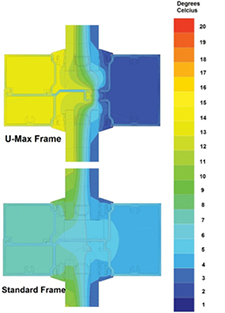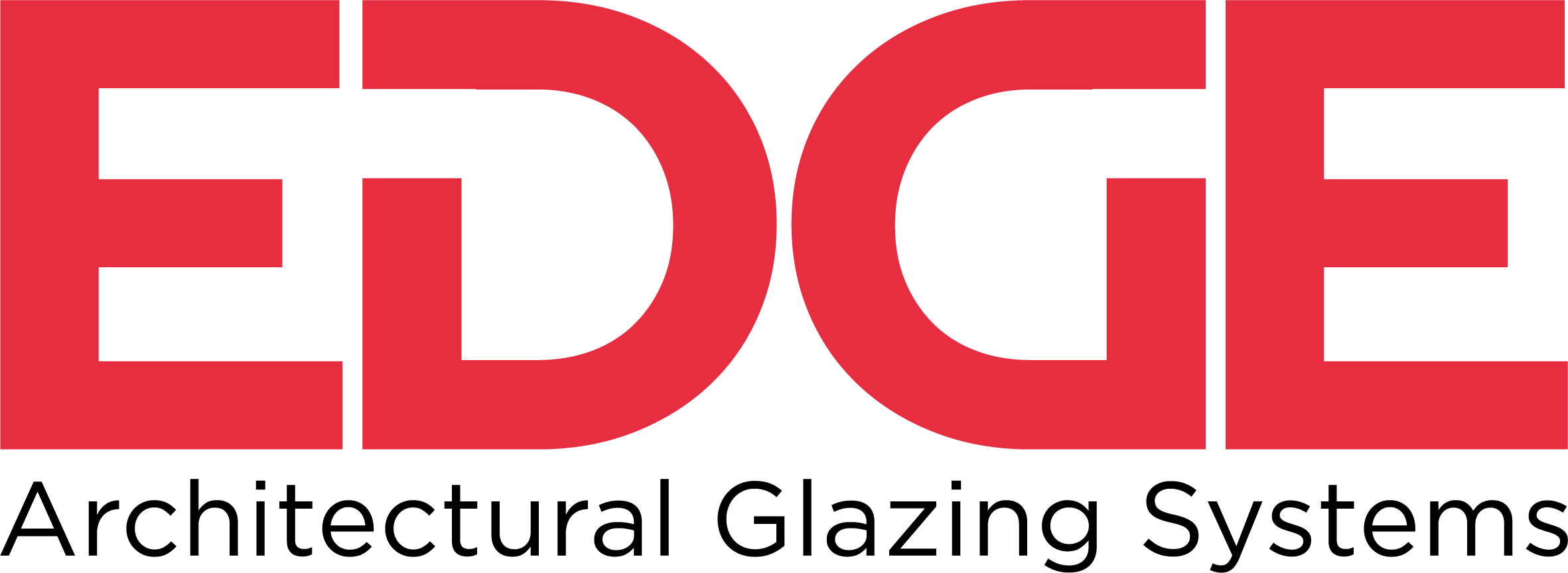05 Aug You want the U-MAX™ pour & debridge thermally broken system and here’s why
7 reasons to choose a pour & debridge thermal break
Thermally broken window and door framing systems offer several advantages including energy efficiency, decreased condensation and reduced radiated cold, resulting in money saved and comfort increased. Up to 40 per cent of a home’s heating energy can be lost through windows. Similarly, up to 87 per cent heat gain is through windows. This makes a massive impact on heating and cooling loads. Improving the thermal performance of windows reduces energy costs and Australia’s greenhouse gas emissions.
It’s easy to understand the value of thermal break. More complicated, however, is choosing a thermal break technology.
Tried, tested and completely original
Thermal break technology primarily stems from two schools of thought – the US and the European methodology. For decades, commercial projects in the United States utilised pour and debridge (P&D) polyurethane systems to prevent through frame energy loss. Polyurethane thermal break systems are highly suitable to larger frame designs. In Europe, the thermal break system of choice utilises a solid Polyamide strip crimped between two or more extrusions. This methodology provides great results for smaller windows and more intricate extrusions.
Instead of following thermal break trends from just one part of the world, we investigated the European and North American systems. As a result, Aluminium Industries designed an original thermally broken commercial framing system for the EDGE Architectural product range.
The U-MAX™ pour & debridge thermally broken window and door system offers high energy efficiency ratings within a comprehensive range of commercial framing systems. It is a system designed by Australians for the Australian climate and the Australian preference for large, expansive windows.
Choose pour & debridge thermal break
Once you know the reasons, we believe you’ll prefer the pour & debridge thermally broken systems, too. Here are just a few.
 1. A better insulator
1. A better insulator
Polyurethane is a 2.5 times better insulator than the Polyamide strip. Polyamide is glass filled nylon and glass is a good conductor of heat and cold. To compensate, thermally broken systems with a Polyamide strip require a wider strip to achieve the same performance of polyurethane.
2. A stronger thermal break
Within 7 per cent strength of original metal, Polyurethane is much stronger than Polyamide. A pour & debridge thermal break allows the EDGE Architectural systems to achieve spans similar to non-broken systems. Polyamide strip technology is significantly weaker in comparison. The limited strength of Polyamide will often require deeper frame depths to compensate for its lesser strength. The Polyamide strip does have its place, though. We use Polyamide in our commercial door for aesthetics, not for structural strength. Our choice of product is based on “best of breed for application” – the best product for each application.
3. A mature technology
Although the Polyurethane pour & debridge thermal break of U-MAX™ is new to Australia, it isn’t new. U-MAX™ incorporates this best practice of US commercial framing systems and adapts it for Australian commercial applications.
4. A methodology of quality control and efficiency
The U-MAX™ pour & debridge systems places emphasis on more efficient fabrication, installation and glazing. By keeping more of the fabrication process in the factory, the environment is better controlled and higher quality results. The goal to create ranges offering improved practices in fabrication, assembly in glazing served as a major driver in the development of the EDGE systems. In achieving this goal, the systems save money and increase quality control by decreasing the need for onsite work.
The efficient integration across single glazed, double glazed and pour & debridge thermally broken systems delivers cost saving benefits.
5. The cost effective choice
EDGE Architectural systems follow the same footprint in broken and unbroken form, allowing architects to achieve prescribed energy ratings at different elevations without changing products. You specify the U-value, we have the system. The ability to mix products on different facades and maintain visual unity offers a cost savings where the thermal break is not required. Our pour & debridge thermal break reduces labour cost. Our glazing methodology, drainage principle and system integration streamline fabrication and allow for more work to be done in the controlled factory environment.
6. Delivering design freedom and visual unity
Beyond the cost savings, the ability to interchange between U-MAX™ and MAX™ systems results in design freedom and visual unity. MAX™ is the non-broken version of U-MAX™ so they share an identical footprint. Use them together on a project for a seamless transition across facades, selecting the correct product for the required energy rating and the desired visual impact. The result is cost control in harmony with stunning aesthetics throughout the project. The eye follows along the façade of a building for an uninterrupted view of an infinity look.This is not an option with a Polyamide strip system. Architects and designers don’t have to change products around the façade. Instead, you can mix, match and marry with our pour & debridge systems.
7. A real choice
What it comes down to, is the right technology for the project to achieve specific project goals. For all the benefits pour & debridge offers over Polyamide strip, sometimes the strip is the right answer. And that’s why, when it’s the better choice for an application, we offer a Polyamided thermal break option.
For Australia
Our thermally broken systems are designed and produced in Australia, for Australian conditions, to meet Australian standards. Choose EDGE Architectural and you benefit from an ecosystem of companies and local people standing behind every architectural window and door frame we create. Local extrusions, local hardware, locally supported warranties. Most importantly, a team of experts to support you.
![]()
Download an excerpted version of this blog post for printing.


